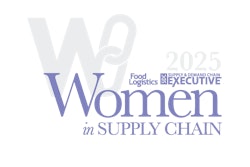
E-commerce businesses across the United Kingdom and Europe are witnessing last-mile delivery cost increases of up to 90%, according to research presented by DS Smith.
“Amidst this period of transition and fast changing trends, leading companies are developing innovative and effective ways to improve their e-commerce and supply chain models without compromising on customer service. The message from our survey is clear; innovative companies that are more open to new ideas, and which regularly review their set-up around last-mile delivery and explore new ideas with packaging suppliers, are better able to cope with the significant challenges that the e-commerce sector faces and in a better position to meet the demands of tomorrow. Equally, those with an ambitious and innovative approach have a greater strategic advantage in terms of finding ways to protect their supply chain costs and either meet consumer demands, or excel above expectations,” says Olivier Cottard, global e-commerce and industries director.
Key takeaways:
- Outgoing costs around couriers, returned items, and products that have failed to arrive or experienced damage during transit have risen significantly within the last year, with 39% of e-commerce retailers surveyed experiencing double-digit rises in overheads because of supply chain challenges.
- In addition, 84% of e-commerce businesses experienced cost increases around the last mile of deliveries within the past year, and 84% of respondents believe that increases are likely to continue to rise over the next 12 months, with 50% anticipating this trend to double again.
- Almost 39% of those questioned reported lower profits as a consequence of operational challenges. Another 35% have increased delivery fees charged to the end consumer to cover these costs, and 35% have increased the price of their products.
- 27% of e-commerce businesses are cutting back on sustainability initiatives to decrease their spending, and many are reviewing their short and long-term operations strategy. Similarly, 59% are reviewing their returns policies, and 57% are managing future forecasting by imposing minimum order values for deliveries.
- Almost 75% of survey respondents reported that their customers expect to receive newly purchased items in sustainable packaging. 71% of these consumers expect to see options for the tracking of deliveries and communications around this, and 69% expect to see flexible delivery times, alongside 67% that anticipate sustainable delivery options.
- Less than 39% claim to have satisfied expectations around sustainable delivery options. Similarly, 36% are concerned that they have not met customer expectations around the costs of delivery in terms of keeping these as low as possible, and only 30% feel that they have successfully met their customer’s expectations around the flexibility of delivery times.
- 65% of those businesses with an innovative mindset are conducting regular supplier reviews for cost savings and 59% are using third-party planning and co-ordination to reduce overhead costs throughout their supply chain, from packaging and production, to warehousing and transportation.

![Pros To Know 2026 [color]](https://img.sdcexec.com/mindful/acbm/workspaces/default/uploads/2025/08/prostoknow-2026-color.mduFvhpgMk.png?auto=format%2Ccompress&bg=fff&fill-color=fff&fit=fill&h=100&q=70&w=100)








![Pros To Know 2026 [color]](https://img.sdcexec.com/mindful/acbm/workspaces/default/uploads/2025/08/prostoknow-2026-color.mduFvhpgMk.png?ar=16%3A9&auto=format%2Ccompress&bg=fff&fill-color=fff&fit=fill&h=135&q=70&w=240)








